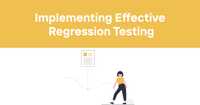Reducing Monitoring Alert Fatigue: Strategies and Best Practices
Alert fatigue silently erodes monitoring effectiveness. When every alert demands equal attention, critical issues get buried in noise. Teams gradually ignore notifications, leading to missed incidents and preventable outages. Understanding and addressing alert fatigue transforms monitoring from a source of stress into a valuable tool for maintaining system reliability.
Monitoring systems should provide clarity during incidents, not create constant interruptions. Effective alerting requires balance - enough sensitivity to catch real problems while filtering out noise. Implementing strategic alerting rules, thoughtful thresholds, and intelligent notification routing creates monitoring systems that support teams rather than overwhelm them.
Understanding the Real Cost of Alert Fatigue
Alert fatigue carries hidden costs beyond immediate operational disruptions:
Quantifiable Impact
Direct Costs:
- Increased mean time to resolution (MTTR)
- Higher incident response burnout
- Missed critical alerts among noise
- Decreased team productivity
Tangible Statistics:
- Industry research shows teams receiving 100+ daily alerts miss up to 30% of critical notifications
- Alert response effectiveness drops by 30% after two hours of continuous alerting
- Teams with high-noise alert systems experience 2-3x higher turnover rates
Psychological Effects
Team Health Impact:
- Monitoring burnout syndrome
- Decreased alert sensitivity over time
- Desensitization to critical issues
- Sleep disruption from off-hours notifications
Setting Dynamic Alert Thresholds
Static thresholds generate excessive false positives. Dynamic thresholds adapt to system behavior:
Dynamic Configuration Examples:
cpu_usage:
warning: 80%
critical: 90%
# Dynamic threshold with time consideration
cpu_usage_dynamic:
baseline: analyze_previous_7_days
deviation_factor: 2.5
minimum_threshold: 70%
time_window: 15m
Adaptive Approaches:
- Percentage deviation from baseline
- Standard deviation statistical models
- Machine learning anomaly detection
- Time-of-day sensitivity adjustments
Technical Approaches to Intelligent Alerting
Technology provides multiple paths to reduce alert noise:
Alert Grouping and Correlation Methods
Intelligent Grouping Techniques:
- Related alert correlation
- Root cause identification
- Topology-aware grouping
- Temporal pattern recognition
Implementation Example:
"correlation_rule": {
"name": "Database Connectivity Issues",
"pattern": [
{ "resource_type": "database", "status": "error" },
{ "resource_type": "api", "contains": "database timeout" }
],
"window": "5m",
"action": "group_as_single_incident"
}
}
Severity Classification
Multi-level Alert Structure:
- Critical: Immediate action required (SMS, calls)
- Warning: Attention needed within hours (email, Slack)
- Info: Awareness only (dashboard, digest)
- Diagnostic: Troubleshooting context (logs only)
Severity Routing Implementation:
- Critical alerts → PagerDuty → On-call phone
- Warning alerts → Slack #incidents channel
- Info alerts → Daily digest email
- Diagnostic data → Attached to incident records
Alert Suppression Mechanisms
Intelligent Filtering:
- Alert blackout windows during maintenance
- Flapping detection and suppression
- Duplicate alert prevention
- Automatic recovery recognition
Organizational Strategies for Alert Management
Technical solutions alone can't solve alert fatigue. Organizational practices play a crucial role:
Creating Effective Alert Response Workflows
Structured Response Process:
- Alert classification by response urgency
- Clear ownership assignment
- Escalation paths for unaddressed alerts
- Post-incident alert optimization
Ownership Documentation:
Database Alerts:
Primary: Database team (working hours)
Secondary: On-call engineer (after hours)
Escalation: System architect (after 30 minutes)
Frontend Alerts:
Primary: Frontend team (working hours)
Secondary: Full-stack developer (after hours)
Escalation: Product lead (after 30 minutes)
Building Alert Discipline
Team Practices:
- "No alert without action" policy
- Regular alert review sessions
- Alert source justification requirements
- Continuous threshold refinement
Measuring Alert Effectiveness
Key Metrics to Track:
- Alert-to-action ratio
- False positive percentage
- Mean time to acknowledge
- Alert noise reduction over time
Sample Analysis:
Monthly Alert Metrics:
- Total alerts: 1,248 (-18% from previous month)
- Actionable alerts: 237 (19% actionable ratio)
- Acknowledged within SLA: 92%
- Top alert sources:
- Database connection timeouts (142 alerts)
- API response time violations (98 alerts)
- Storage capacity warnings (76 alerts)
Implementing a Progressive Alert Reduction Strategy
Reducing alert fatigue requires a methodical approach:
Phase 1: Alert Audit
Documentation Process:
- Catalog all existing alerts
- Record frequency and actionability
- Identify sources of noise
- Classify by true urgency
Common Audit Findings:
- Default thresholds causing noise
- Redundant monitoring systems
- Alert storms during partial outages
- Overly sensitive configuration
Phase 2: Prioritization Framework
Alert Classification Matrix:
- Business impact severity
- Service availability effect
- Response time requirements
- Recovery complexity
Example Framework:
P1: Customer-facing outage, revenue impact
P2: Customer-facing degradation, major functionality
P3: Internal service issues, minor customer impact
P4: Non-critical service degradation
P5: Informational only
Phase 3: Technical Implementation
Implementation Steps:
- Configure alert correlation rules
- Implement graduated thresholds
- Set up intelligent routing
- Enable automatic recovery detection
Advanced Alert Optimization Techniques
Machine Learning Integration
AI-Assisted Alerting:
- Anomaly detection for unusual patterns
- Predictive alerts before threshold violations
- False positive identification
- Alert relationship mapping
Contextual Enrichment
Enhanced Alert Data:
- Infrastructure context attachment
- Recent deployment information
- Related incident history
- Automatic runbook linking
Cross-System Alert Correlation
Unified Monitoring Vision:
- Application performance correlations
- Infrastructure relationship mapping
- Dependency-aware alerting
- Business context integration
Alert Fatigue Reduction Results
Effective alert fatigue reduction produces measurable outcomes:
Performance Indicators
Meaningful Metrics:
- Resolution time reduction
- Increased action-per-alert ratio
- Team satisfaction improvement
- After-hours interruption decrease
Team Productivity Benefits
Operational Improvements:
- More focused troubleshooting
- Reduced context switching
- Increased preventative bandwidth
- Better sleep and on-call experience
Long-term Monitoring Evolution
Sustainable Practices:
- Regular alert review cadence
- Continuous threshold refinement
- New service alerting templates
- Alert effectiveness reporting
Alert fatigue represents a solvable challenge with both technical and organizational dimensions. Implementing structured alert management, intelligent correlation, and continuous optimization creates monitoring systems that support reliability without overwhelming teams.
Ready to transform your alerts from noise to signal? Use intelligent monitoring practices to reduce alert fatigue and focus only on what truly matters.



